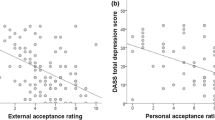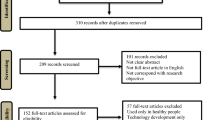Abstract
Social Assistive Robots are starting to be widely used for paediatric health-care. In this setting, the development of effective strategies to engage and remain compelling during the interaction is still an open research area since, in the case of an incoming medical procedure, children could be in an anxiety state. In this work, the proposed strategy relies on the use of a social robot interacting with the children and applying distraction strategies that are used in human–human interaction. Additionally, the robot displays emotional behaviours to attract the children attention. We present the results of a 2 months study (N = 139) conducted in a Health-Vaccines Centre, where the effects of the distraction provided by a social robot, showing such interactive behaviours interleaved with emotional ones, are compared with the same distracting strategies without any emotional social cues and with the case without the robot. Such emotional behaviours are selected with a positive or negative valence according to the initial anxiety state of the children (e.g., low or high). Outcome criteria for the evaluation of the intervention included the parents reported fear, anxiety and happiness at different stages of the interaction, self-report of the perceived pain, and an external behavioural evaluation of the pain. Results showed that the robot distraction strategies were able to reduce fear and anxiety, and increase happiness in every condition. Moreover, children perceived less pain with respect to the case of no robot. Finally, results showed that the initial children anxiety has an impact on the ability of the robot to be engaging.






Similar content being viewed by others
References
Ahmad MI, Mubin O, Orlando J (2017) Adaptive social robot for sustaining social engagement during long-term children–robot interaction. Int J Hum Comput Interact 33(12):943–962
Bar-Haim Y, Lamy D, Pergamin L, Bakermans-Kranenburg MJ, van IJzendoorn MH (2007) Threat-related attentional bias in anxious and nonanxious individuals: a meta-analytic study. Psychol Bull 133(1):1–24
Beran TN, Ramirez-Serrano A, Vanderkooi OG, Kuhn S (2013) Reducing children’s pain and distress towards flu vaccinations: a novel and effective application of humanoid robotics. Vaccine 31(25):2772–2777
Beran TN, Ramirez-Serrano A, Vanderkooi OG, Kuhn S (2015) Humanoid robotics in health care: an exploration of children’s and parents’ emotional reactions. J Health Psychol 20(7):984–989
Cohen LL (2008) Behavioral approaches to anxiety and pain management for pediatric venous access. Pediatrics 122(Supplement 3):S134–S139. https://doi.org/10.1542/peds.2008-1055f
Dahlquist L, Pendley J, Landthrip D, Jones C, Steuber C (2002) Distraction intervention for preschoolers undergoing intramuscular injections and subcutaneous port access. Health Psychol Off J Div Health Psychol Am Psychol Assoc 21:94–9
DeMore M, Cohen LL (2005) Distraction for pediatric immunization pain: a critical review. J Clin Psychol Med Settings 12(4):281–291
Fischer K, Yang S, Mok B, Maheshwari R, Sirkin D, Ju W (2015) Initiating interactions and negotiating approach: a robotic trash can in the field. AAAI Press, Palo Alto, pp 10–16
Fridin M (2014) Kindergarten social assistive robot: first meeting and ethical issues. Comput Hum Behav 30:262–272
Greczek J, Matarić M (2015) Toward personalized pain anxiety reduction for children. In: AAAI fall symposium on artificial intelligence and human–robot interaction. IEEE, Arlington
Hearst D (2015) Non-pharmacological distraction techniques as sedation adjunct. Springer, New York, pp 655–674
Hajcak G, Dennis TA (2009) Brain potentials during affective picture processing in children. Biol Psychol 80(3):333–8
Jeong S, Breazeal C, Logan D, Weinstock P (2018) Huggable: the impact of embodiment on promoting socio-emotional interactions for young pediatric inpatients. In: Proceedings of the CHI conference on human factors in computing systems, CHI’18. ACM, New York, pp 495:1–495:13
Jeong S, Logan DE, Goodwin MS, Graca S, O’Connell B, Goodenough H, Anderson L, Stenquist N, Fitzpatrick K, Zisook M, Plummer L, Breazeal C, Weinstock P (2015) A social robot to mitigate stress, anxiety, and pain in hospital pediatric care. In: Proceedings of the tenth annual ACM/IEEE international conference on human–robot interaction extended abstracts, HRI’15 extended abstracts. ACM, New York, pp 103–104
Jibb LA, Birnie KA, Nathan PC, Beran TN, Hum V, Victor JC, Stinson JN (2018) Using the mediport humanoid robot to reduce procedural pain and distress in children with cancer: a pilot randomized controlled trial. Pediatr Blood Cancer 65(9):e27242
Jimenez F, Yoshikawa T, Furuhashi T, Kanoh M (2015) An emotional expression model for educational-support robots. J Artif Intell Soft Comput Res 5(1):51–57
Kahneman D (1973) Attention and effort. Prentice-Hall, Englewood Cliffs
Kanda T, Hirano T, Eaton D, Ishiguro H (2004) Interactive robots as social partners and peer tutors for children: a field trial. Hum Comput Interact 19(1):61–84
LeDoux JE (1995) Emotion: clues from the brain. Annu Rev Psychol 46(1):209–235
Mann JA, MacDonald BA, Kuo IH, Li X, Broadbent E (2015) People respond better to robots than computer tablets delivering healthcare instructions. Comput Hum Behav 43(C):112–117
Mccaul K, Malott JM (1984) Distraction and coping with pain. Psychol Bull 95(3):516–33
McClure E, Monk C, Nelson E, Parrish J, Adler A, Blair R, Fromm S, Charney D, Leibenluft E, Ernst M, Pine D (2007) Abnormal attention modulation of fear circuit function in pediatric generalized anxiety disorder. Arch Gen Psychiatry 64(1):97–106
Mina Marmpena Angelica Lim TSD (2018) How does the robot feel? Perception of valence and arousal in emotional body language. Paladyn J Behav Robot 9(1):168–182
Mogg K, Bradley BP, Williams R (1995) Attentional bias in anxiety and depression: the role of awareness. Br J Clin Psychol 34(1):17–36
Pulido JC, González JC, Suárez-Mejías C, Bandera A, Bustos P, Fernández F (2017) Evaluating the child–robot interaction of the naotherapist platform in pediatric rehabilitation. Int J Soc Robot 9(3):343–358
Phelps EA (2006) Emotion and cognition: insights from studies of the human amygdala. Annu Rev Psychol 57(1):27–53
Posner J, Russell JA, Peterson BS (2005) The circumplex model of affect: an integrative approach to affective neuroscience, cognitive development, and psychopathology. Dev Psychopathol 17(03):715–734
Rossi S, Ercolano G, Raggioli L, Savino E, Ruocco M (2018) The disappearing robot: an analysis of disengagement and distraction during non-interactive tasks. In: 27th IEEE international symposium on robot and human interactive communication (RO-MAN), pp 522–527
Rossi S, Ferland F, Tapus A (2017) User profiling and behavioral adaptation for hri: a survey. Pattern Recogn Lett 99(Supplement C):3–12
Rossi S, Ruocco M (2019) Better alone than in bad company: effects of incoherent non-verbal emotional cues for a humanoid robot. Interact Stud 20:487–508
Rossi S, Staffa M, Tamburro A (2018) Socially assistive robot for providing recommendations: comparing a humanoid robot with a mobile application. Int J Soc Robot 10(2):265–278
Satake S, Kanda T, Glas DF, Imai M, Ishiguro H, Hagita N (2009) How to approach humans?-Strategies for social robots to initiate interaction. In: 4th ACM/IEEE international conference on human–robot interaction (HRI), pp 109–116
Solomon B, DeCicco JM, Dennis TA (2012) Emotional picture processing in children: an erp study. Dev Cogn Neurosci 2(1):110–119
Song S, Yamada S (2017) Expressing emotions through color, sound, and vibration with an appearance-constrained social robot. In: Proceedings of the 2017 ACM/IEEE international conference on human–robot interaction. ACM, pp 2–11
Trost MJ, Ford AR, Kysh L, Gold JI, Mataric M (2019) Socially assistive robots for helping pediatric distress and pain: a review of current evidence and recommendations for future research and practice. Clin J Pain 35(5):451–458
Taddio A, Appleton M, Bortolussi R, Chambers C, Dubey V, Halperin S, Hanrahan A, Ipp M, Lockett D, MacDonald N, Midmer D, Mousmanis P, Palda V, Pielak K, Riddell RP, Rieder M, Scott J, Shah V (2010) Reducing the pain of childhood vaccination: an evidence-based clinical practice guideline. Can Med Assoc J 182(18):E843–E855
Thimmesch-Gill Z, Harder KA, Koutstaal W (2017) Perceiving emotions in robot body language: acute stress heightens sensitivity to negativity while attenuating sensitivity to arousal. Comput Hum Behav 76:59–67
Thomas KM, Drevets WC, Whalen PJ, Eccard CH, Dahl RE, Ryan ND, Casey B (2001) Amygdala response to facial expressions in children and adults. Biol Psychiatry 49(4):309–316
Tielman M, Neerincx M, Meyer JJ, Looije R (2014) Adaptive emotional expression in robot–child interaction. In: Proceedings of the 2014 ACM/IEEE international conference on human–robot interaction, HRI’14. ACM, New York, pp 407–414
Wickens CD (2008) Multiple resources and mental workload. Hum Factors 50(3):449–455
Williams JMG, Watts FN, MacLeod C, Mathews A (1988) Cognitive psychology and emotional disorders. The Wiley series in clinical psychology. Wiley, Oxford
Author information
Authors and Affiliations
Corresponding author
Ethics declarations
Conflict of interest
The authors declare that they have no conflict of interest.
Informed consent
All participants’ parents signed a written informed consent.
Ethics statement
The study was approved by the Bioethics Committee of the University of Perugia (Italy).
Additional information
Publisher's Note
Springer Nature remains neutral with regard to jurisdictional claims in published maps and institutional affiliations.
Rights and permissions
About this article
Cite this article
Rossi, S., Larafa, M. & Ruocco, M. Emotional and Behavioural Distraction by a Social Robot for Children Anxiety Reduction During Vaccination. Int J of Soc Robotics 12, 765–777 (2020). https://doi.org/10.1007/s12369-019-00616-w
Accepted:
Published:
Issue Date:
DOI: https://doi.org/10.1007/s12369-019-00616-w




